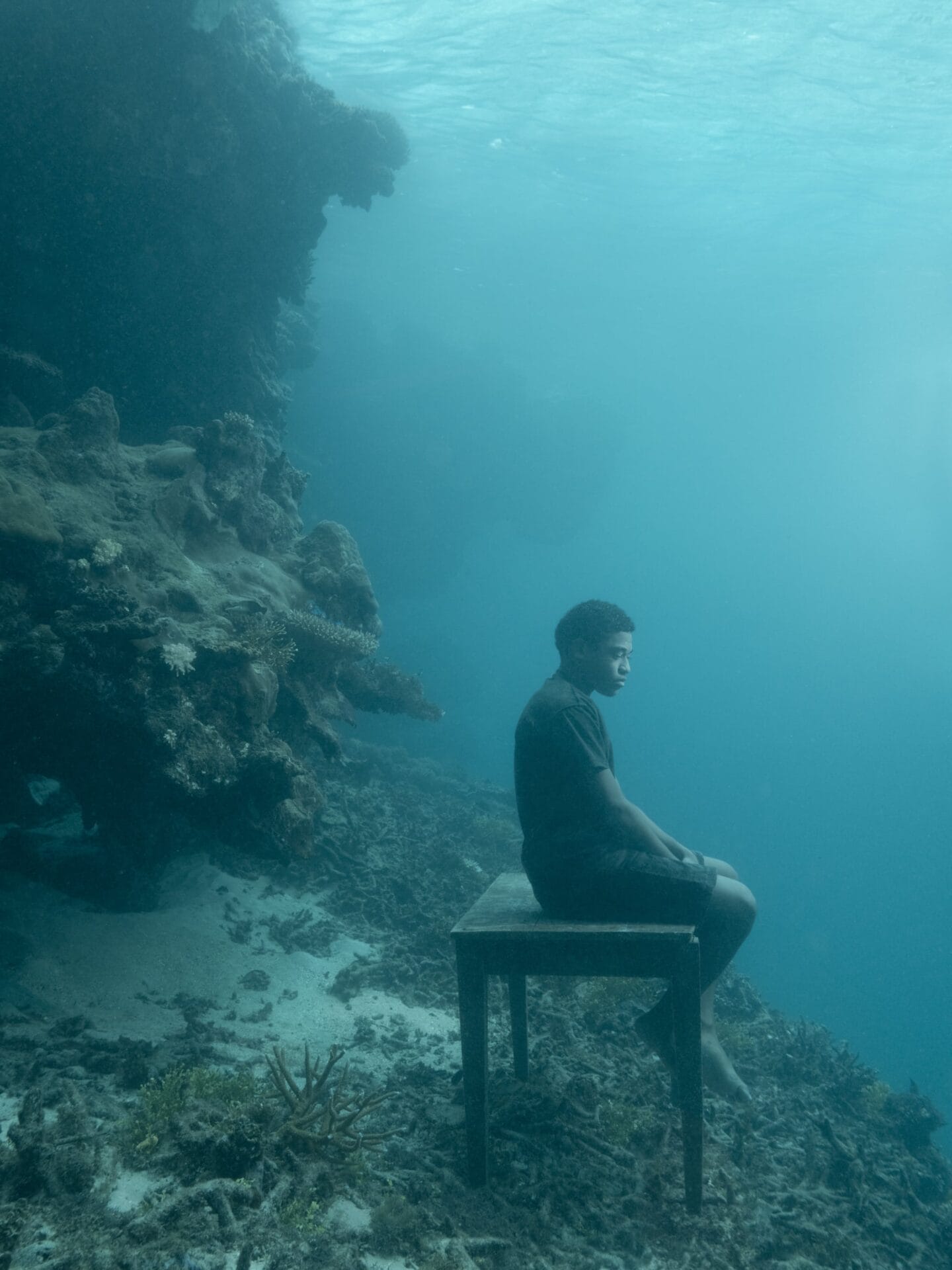This post was originally published on Colossal
“Petero by Cliff,” Fiji (2023). All images © Nick Brandt, shared with permission
Although warming global temperatures are causing sea levels to rise around the globe, the Pacific islands are experiencing the change at a more rapid rate than anywhere else. Higher tides and extreme weather can wage unrelating flooding, rendering low-lying regions uninhabitable and displacing the communities that call them home.
In Sink / Rise, Nick Brandt peers into the not-so-distant future to imagine the effects of rising waters. His photographs depict people performing unremarkable tasks like sitting at a table or tottering on a seesaw, although their surroundings are incredibly unsettling. Shot entirely in-camera off the coast of Fiji, each seemingly mundane scene occurs on the ocean floor. The subjects hold their breath as they pose, and their suffocation quickly becomes literal. Each wears a tense, rigid expression reflective of their catastrophic situation.
Conjuring an apocalyptic reality, Brandt is known for visualizing the often difficult-to-comprehend impacts of the climate crisis and now, its remarkable potential for danger. Sink / Rise is the third part of an ongoing series titled The Day May Break, which depicts people and animals affected by environmental destruction in Zimbabwe, Kenya, and Bolivia. Now available in a book published by Hatje Cantz, the most recent collection is the first situated underwater.
As Zoë Lescaze describes in the introduction, the portraits are haunting and appear “as though the familiar laws of physics have stalled in this strange, liminal zone between land and sea.” Rather than buoyantly swim or float, the subjects are critically bound to their submerged positions.
Pick up Sink / Rise on Bookshop, and find more from Brandt, including upcoming opportunities to see The Day May Break in person, on his site and Instagram.

“Serafina and Keanan on Bed,” Fiji (2023)

“Ben in Sofa,” Fiji, (2023)

“Serafina at Table,” Fiji (2023)

“Akessa and Maria on Sofa,” Fiji (2023)

“Serafina Holding her Brother Keanan I,” Fiji (2023)

“Joel and Petero on Seesaw,” Fiji (2023)

Behind the scenes of “Petero at Cliff”
Do stories and artists like this matter to you? Become a Colossal Member today and support independent arts publishing for as little as $5 per month. The article Suffocating Subjects Long for Air in Nick Brandt’s Unsettling Underwater Photos appeared first on Colossal.





0 Comments